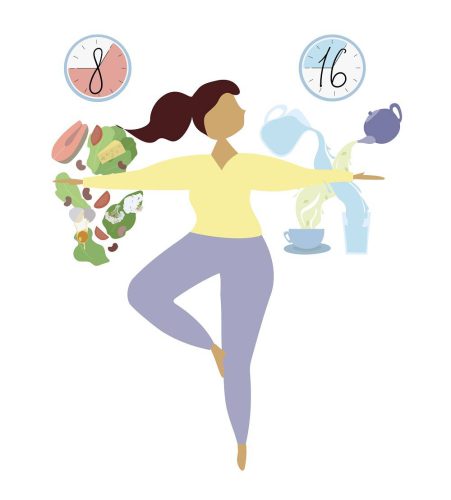Take your first step to a healthy lifestyle with the 16/8 diet and enjoy its many benefits including weight loss. (This is a chapter of a bigger guide on intermittent ...
3 min read
Take your first step to a healthy lifestyle with the 16/8 diet and enjoy its many benefits including weight loss.
(This is a chapter of a bigger guide on intermittent fasting guide.)
If you wish to get started on intermittent fasting, 16 hour intermittent fasting option is the most feasible for beginners because the fasting period conveniently includes nearly 8 hours of targeted sleep that individuals are supposed to get each day, leaving only 8 hours of fasting when you are awake.
In this schedule, you eat all meals within an 8-hour window and fast for the rest of the 16 hours i.e. avoid all meals and calorie-rich liquids.
For instance: If you wake up at 7 am, eat your first meal after 11 am and your last meal meal before 7 pm. From 7 pm until bedtime, you avoid all foods.
Repeat the same schedule next day.
The traditional concept of breakfast won’t apply here. As the name suggests, it is the first meal that ‘breaks your fast’ but it doesn’t necessarily need to be eaten within the first few hours of waking up.

Other forms of intermittent fasting have extended fasting hours that go from 20 hours to even 72 hours. Extended fasting between meals is beneficial for healing at a cellular level and is often employed to treat severe ailments. It is often practised at intervals or until certain health targets are achieved.
In comparison, fasting 16 hours a day is a regular discipline that helps you not only achieve weight loss but also maintain body fat composition and insulin levels, among a host of other benefits.
Nutritionist and trainer Martin Berkhan came up with Leangains (also known as the 16/8
intermittent fasting) as a daily plan that involves resistance training, a specific meal plan
and fasting.
Like the 16 hour fast diet, Leangains breaks the day in to a strict feeding window of 8 hours and a fasting window of 16 hours.
What sets it apart from the typical 16/8 diet is that it recommends three large meals in a day:
The timing, though encouraged, can be altered as per individual schedule.


Subscribe to our newsletter